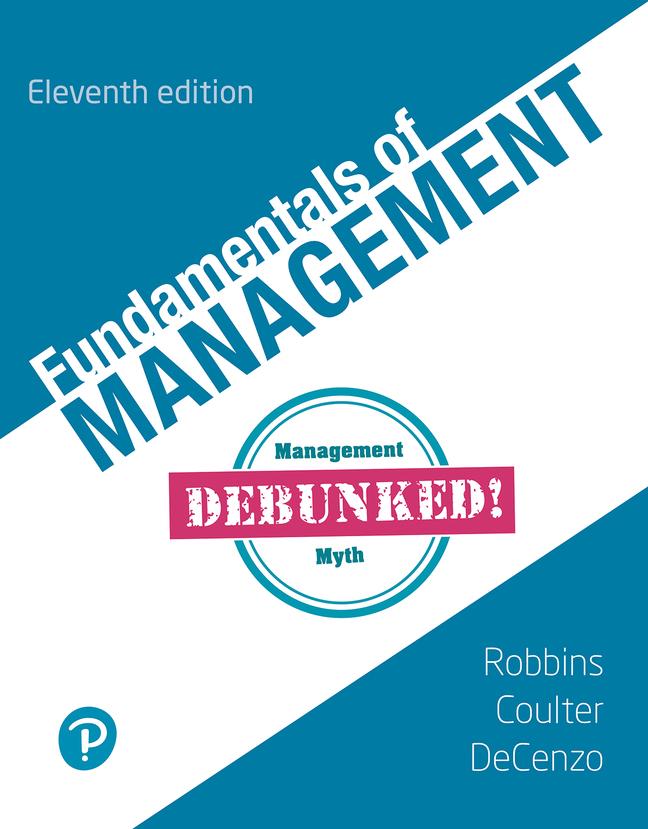Question
In this report, we critically evaluate the performance of our team in completing the first two assessments of theMGT600 Management, People and Teams. It integrates
In this report, we critically evaluate the performance of our team in completing the first two assessments of theMGT600 Management, People and Teams. It integrates theories and frameworks related to team dynamics, performance management, and improvement strategies learned in the course.We will discuss how our team came together, the roles played by each member, challenges encountered, and how we resolved conflicts. Based on our experience, we will recommend strategies for enhancing team performance and applying our learnings in future workplace contexts. So,this evaluation not only seeks to measure our success but also aims to understand how different factors contributed to the team's dynamics and outcomes.
Background
Our team was formed as part of the course requirements for Assessments 1 and 2. Comprising of Diana, Sangita, and Benjamin, each member was assigned specific tasks related to managing performance, recruiting the Biofuels Management Team, and developing high-performing teams, respectively. The formation of the group was guided by the need to address the diverse challenges faced by the client, ANG, and leverage our collective knowledge and skills to provide comprehensive solutions.
Diana took the lead in managing performance, focusing on implementing a new performance management system using the latest software.
Sangita was responsible for recruiting the Biofuels Management Team, ensuring the selection of talent aligned with ANG's strategic objectives.
Benjamin undertook the task of developing high-performing teams, emphasizing goal clarity, open communication, and fostering trust and collaboration.
Main Discussion
Our team demonstrated a high level of commitment, punctuality, and collaboration throughout the assessment process. Despite occasional disagreements, we effectively communicated and resolved conflicts through constructive dialogue. Each member contributed their expertise and worked diligently to meet deadlines and deliver quality outputs.
Our team's formation and development strictly adhered to Tuckman's stages of group development. Initially, during theFormingstage, we acquainted ourselves with each other and the tasks at hand, setting expectations and understanding the project scope. As we transitioned into theStormingstage, conflicts arose primarily around how tasks should be approached and allocated. This phase was crucial as it forced us to confront our differences and work through them. In theNormingstage, we developed a cohesive working strategy that accommodated each member's strengths and weaknesses, leading to a more structured approach to our collaboration. Finally, in thePerformingstage, our team reached a level where our collective focus was on efficiently completing the assessments, marked by high productivity and mutual support.
Roles and Contributions
- Dianaplayed the role of the Analyst, delving deep into comparative analyses and formulating strategic recommendations based on our findings.
- Sangitawas the Coordinator, focusing on optimizing recruitment strategies and leveraging her HR expertise to enhance our approach.
- Benjaminacted as the Motivator, offering insights into team dynamics and fostering an environment conducive to building high-performing teams.
- My roleinvolved being the Innovator, integrating new performance management systems inspired by successful implementations seen in leading companies like Google.
Impact of Dynamics
The varying professional backgrounds of the team members brought richness in perspectives but also challenges in aligning these diverse views with the team's objectives. Individual commitment levels varied, affecting task completion and overall team morale. Understanding and managing these dynamics was critical for maintaining team performance.
Improvement Strategies
To enhance our team's efficiency in future projects, we propose:
- Streamlined Communication: Implementing regular scheduled meetings and using collaborative tools like Slack or Microsoft Teams to ensure all members are consistently updated and engaged.
- Clear Expectations and Accountability: Establishing clear guidelines and accountability mechanisms at the outset of the project to prevent misunderstandings and ensure every team member knows what is expected of them.
Recommendations Applying Learnings
- Structured Feedback Loops: Just as Google employs continuous feedback mechanisms, we recommend a similar approach to ensure ongoing alignment and adaptability in team projects.
- Role Clarity and Goal Alignment: Establishing clearly defined roles and aligned goals from the start, much like Google's OKR framework, to ensure effective contribution towards the team's objectives.
- Development and Support: Emulating Coca-Cola's strategies for nurturing leadership and innovation within the team, ensuring each member has the necessary resources and support to thrive.
Personal Application
In my current or future roles, I will champion structured frameworks for performance and change management, aiming to ensure that teams are integral to and well-informed about the organizational strategies. This approach will include advocating for regular training sessions, maintaining open communication channels, and ensuring clear paths for professional development, inspired by our course learnings and this assessment experience.
Conclusion
This evaluation has highlighted the critical role of effective team dynamics and management practices in achieving team objectives. By analyzing our team's strategies and integrating established business practices from industry leaders, we've identified significant areas for improvement. These insights are invaluable both academically and professionally, emphasizing the importance of adaptability, continuous improvement, and strategic planning in team settings. This report not only reflects on past performances but also sets a proactive path for future team engagements, aiming to enhance both individual and collective effectiveness in forthcoming projects.
I NEED references of this part according to my requirement It is essential that you use appropriate APA style for citing and referencing research. Please see more information on referencing in the Academic Skills webpage. please provide access date as well, and alphabetically arrange please.
Step by Step Solution
There are 3 Steps involved in it
Step: 1

Get Instant Access to Expert-Tailored Solutions
See step-by-step solutions with expert insights and AI powered tools for academic success
Step: 2

Step: 3

Ace Your Homework with AI
Get the answers you need in no time with our AI-driven, step-by-step assistance
Get Started


